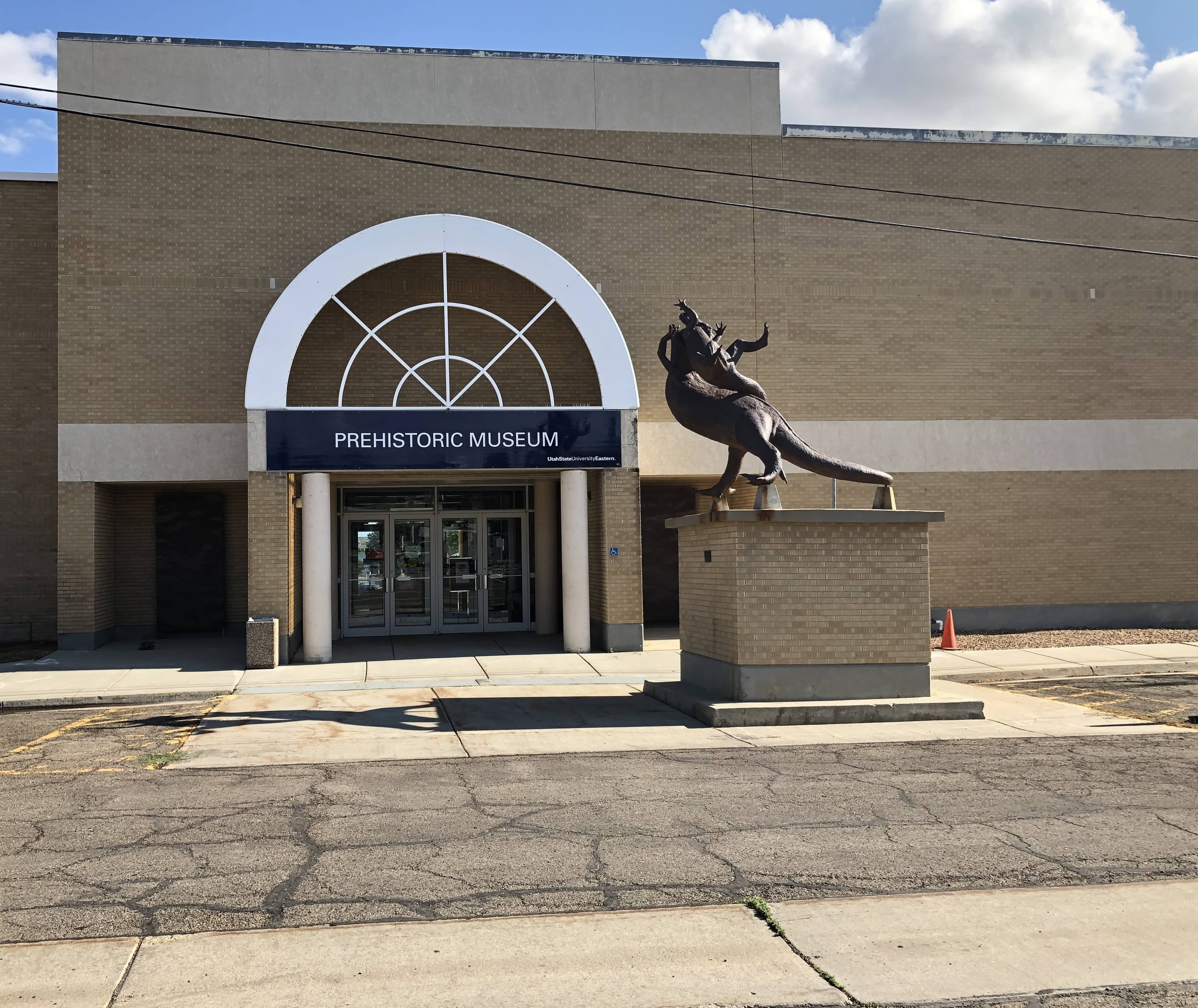
By Aidan Mortensen | KOAL News
The Utah State University Eastern Prehistoric Museum was featured in the new PBS series “Walking with Dinosaurs.’ The show follows paleontologists worldwide as they uncover fossils and dramatize what the dinosaur’s life may have been like.
Museum Curator of Paleontology Josh Lively joined the KOAL newsroom to give a behind-the-scenes look at the series and the process of digging fossils while being filmed.
Speaking first on the museum’s perspective on the dig featured in the show, Lively said,” So, this site has been known for a long time. I think this was discovered in the mid-90s by a volunteer at the Denver Museum of Nature and Science. They excavated the site for over a decade but haven’t returned since the late 2000s. But this particular site, it’s not just one animal. It’s what we call a bone bed. So, it’s a big mass death assemblage of all of these Gastonia and a few other critters too. And the bone bed covers two acres. So, we could go out and focus on this one site for the rest of my career, 30 years till I retire, and still not have all the bones out of the ground. So, it’s a pretty neat site to work.”
Located in Grand County, the site is the largest concentration of ankylosaurus on the planet – a nearly two-acre bonebed that preserves thousands of bones from the dinosaur Gastonia. A few fossils of Utahraptor were also discovered at this site.
Diving into the episode, Lively explained,” The focus of this episode is the Gastonia and Utahraptor; the first individuals of those species are housed right here at our museum. So, we have the first discovered specimen of Utah raptor. It’s not as complete as some of the ones that have been found more recently by other institutions, but we have the first. So, anyone that studies raptor dinosaurs on the planet comes to Price, Utah to look at our raptor, our Utah raptor.” He continued,” And then we also have the first specimen of Gastonia that was ever discovered, which is a beautiful skull that we have on display in the museum.”
This dig provided the additional challenge of having a film crew following the action. “So, whenever we’re doing a big excavation like this, we have volunteers helping us. At the Prehistoric Museum, we have two paid paleontologists, myself and our collections manager, Matt Merz, and that’s it. But we’ll sometimes have up to 15, 17 folks on a dig, and most of those are either USU students or volunteers from the community that don’t necessarily have a background in paleo … but then when you have a camera crew of five to 10 folks that are saying, oh, sorry, can you do that again? That adds a different layer. So, having the BBC filming this episode was kind of an experience. I had never really been on TV other than the news a few times. So, learning how showbiz works, it was a lot.”
Lively added,” It was fun. Other than the part where oftentimes you have to do multiple takes for the same thing and making sure you say things roughly the same as what you did last, it can get a little taxing. One thing that was unique about this is usually when folks come on dinosaur digs to film; I’ll give you an example: a colleague of mine, Jim Kirkland, got filmed for Dirty Jobs back when that show was on, and they were out for a day. The BBC was actually out with us for 11 days. So, it wasn’t just a quick in and out. They filmed us all day, every day for almost two weeks.”
Lively also took the opportunity to encourage community members to get out and volunteer with the museum,” We take volunteers in the air conditioning, in our prep lab, as well as in our collections. Our collection space is right there on the USU Eastern Campus. Our lab is in the museum itself. So, if you don’t like to spend your time in the desert, you can always get involved with paleontology in-house in the museum. But if you’re interested in this particular dig site or any of our other field projects, you can come on a dig. Volunteer with us. Totally free. We feed you. We water you. All you have to do is either hike around, stare at the ground, look for fossils, or, in the case of our Gastonia site that we’re digging, plop down under a shade tent and dig, dig, dig, and see more dinosaur bones than you would ever care to.”
Closing our conversation, Lively said,” Definitely check out this episode. It’s going to be available for quite some time on pbsutah.org. You can stream it anytime. But, you know, as a reminder, these aren’t just nebulous things that are out in the ether. You can come see the original fossils on display at our museum being actively prepared in our museum. If you walk up to the prep lab, we’ve collected hundreds of bones from the site so far, just over two field seasons. And as I said, if you want to actually work on these bones, get involved as a volunteer.”
“Walking with Dinosaurs” is available to stream online at pbsutah.org and on the PBS app. Episode three, “Band of Brothers,” features the USUE Prehistoric Museum.
